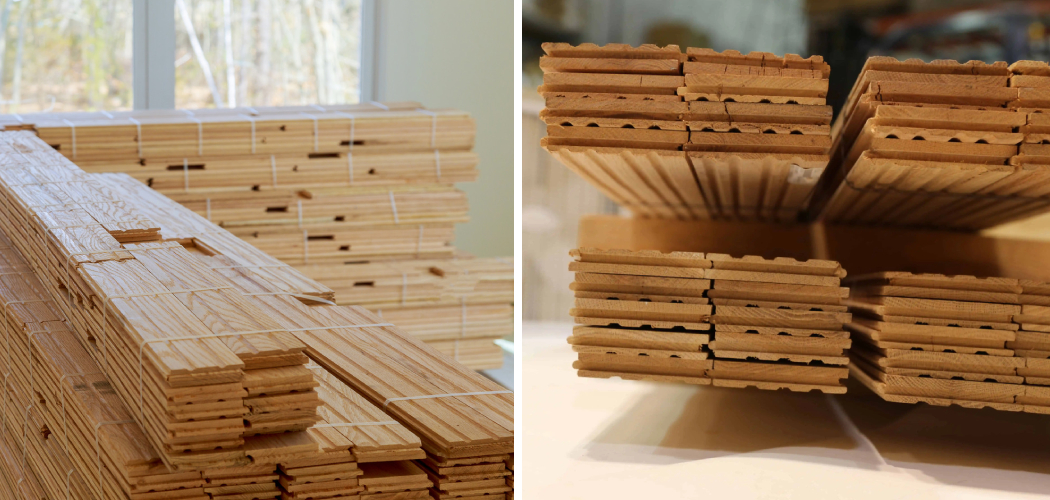Acclimation is an important step in the process of installing hardwood flooring. If you don’t acclimate, your floors may suffer from warping, cupping, and buckling. Stacking hardwood flooring correctly enables the planks to adjust to the surrounding environment before installation, avoiding costly problems later.
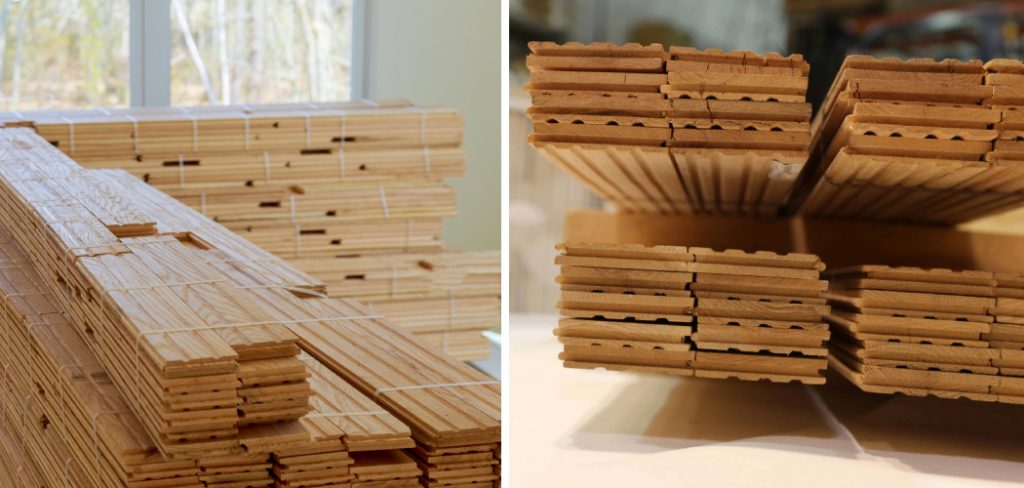
When hardwood flooring is stacked for acclimation, the moisture content of the wood planks can be adjusted to match the climate of the installation site. This helps ensure that the boards will not warp or buckle due to changes in temperature and humidity levels.
Stacking boards also allow them to adjust their sizes as they absorb and repel moisture, ensuring a tighter fit and cleaner, seamless installation. In this blog post, You will learn how to stack hardwood flooring for acclimation.
Step by Step Processes for How to Stack Hardwood Flooring for Acclimation
Step 1: Inspect the Hardwood
Before stacking, check the hardwood for any visible imperfections like chips, scratches, dents, and other damage if you find any issues, repair or replace them before beginning the acclimation process.
Step 2: Arrange the Hardwood in Stacks
Arrange the hardwood planks in groups of three-five boards each, and ensure that the same number of planks is in each stack. Try to make the stacks as uniform as possible, with all end joints facing in the same direction. Place the stacks around the perimeter of the room you’re installing them in, making sure to keep a gap between adjacent stacks for airflow.
Step 3: Place Stacks on Top of Each Other
After stacking the hardwood planks around the room, place each stack on top of one another to create a stable and even surface. Make sure there is adequate space between each plank for air circulation. Cover the stacks with plastic sheeting to protect against any moisture or water damage. This should be done for all four sides of each stack.
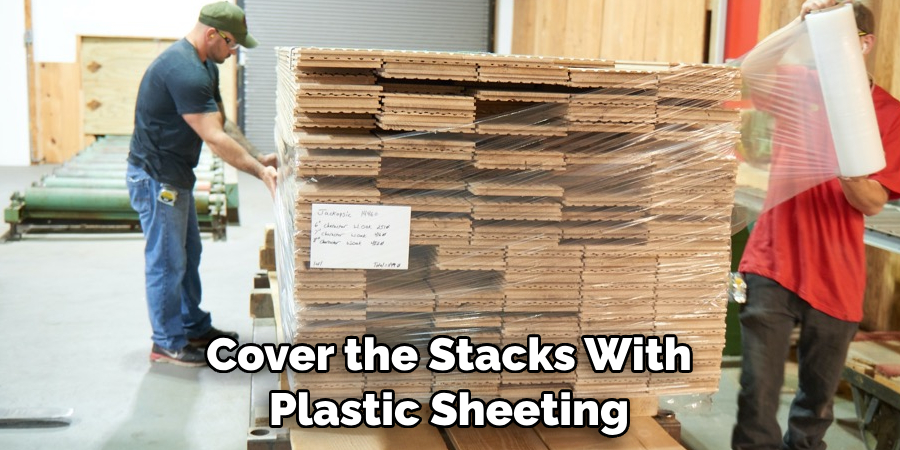
Step 4: Place a Weight Over Plastic Sheeting
To ensure the plastic sheeting is securely in place, place a weight (such as a brick or large book) over it. This will also help to keep the planks from shifting while they’re in the acclimation process. Leave the planks to acclimate for at least 48 hours and up to a week for thicker planks. During this time, check periodically that the plastic sheeting isn’t sagging or shifting from its place.
Step 5: Re-arrange the Planks
After the acclimation period is complete, re-arrange the planks to be installed in their original stacks. Carefully remove the plastic sheeting from each stack and discard it properly. The planks are ready for installation once all the steps have been completed. Ensure that none of the planks have shifted during acclimation and that all end joints are in the correct place before proceeding with the rest of the installation.
With these steps, you can easily stack hardwood flooring for acclimation to ensure a perfect installation. Your hardwood floor will look great for years with careful attention and patience.
Tips for How to Stack Hardwood Flooring for Acclimation
- Always wear safety glasses or goggles when handling and stacking hardwood flooring, as small particles can fly up from cutting or sawing materials.
- Properly support the flooring to prevent bowing or warping over time. This could be done by using blocks of wood placed underneath each stack of boards.
- Be sure to keep the boards as close together as possible when stacking, with a minimum of 3” between each board. This will help ensure proper air circulation throughout the stack.
- Make sure to store hardwood flooring in an area that is dry and away from direct sunlight, as this can cause excessive heat build-up and warp the boards.
- Ensure each stack of hardwood flooring is at a manageable height, as this can create instability and lead to shifting and warping.
- When using a tarp or plastic sheeting to cover the stacks of wood, be sure that it does not come into contact with any part of the wood itself, as moisture build-up underneath can damage the boards.
- Regularly check the hardwood flooring to ensure it is still properly stacked and securely held together. This will prevent any shifting or instability over time and ensure the wood acclimates correctly.
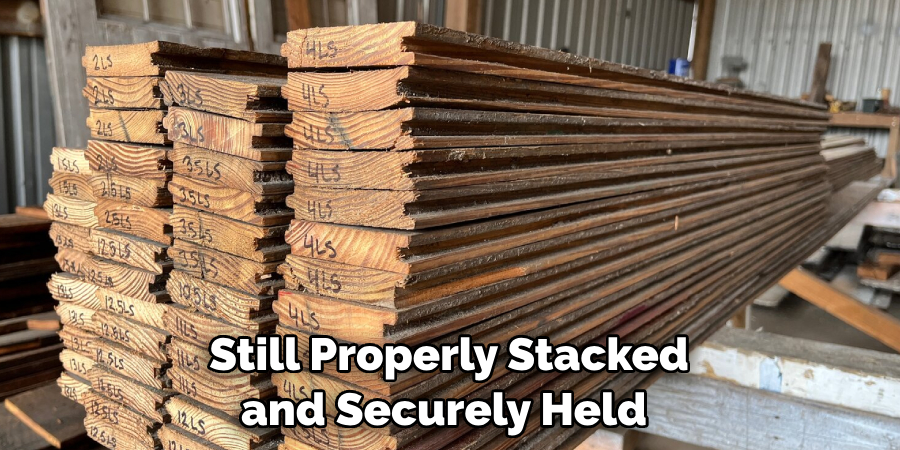
By following these tips, you can be confident that your hardwood flooring will be properly stored and acclimated, ready for installation when the time comes.
What is the Importance of Proper Hardwood Flooring Acclimation?
Acclimation is a critical step in the installation of hardwood floors. Without proper acclimation, your flooring may suffer from excessive expansion and contraction due to changes in relative humidity. This can cause gaps between planks or buckling on the surface of the wood. Acclimating hardwood flooring allows it to adjust to its new environment and helps reduce the amount of movement it could experience. Here are a few tips to get you started:
- Make sure your flooring has been stored correctly before installation. Hardwood should be allowed to sit in its packaging for at least 48 hours before installation to adjust to its environment’s temperature and humidity.
- Select an area with a consistent temperature similar to the rest of your home. This should be a dry, dust-free space such as a basement or garage – not a humid room like a bathroom or kitchen.
- It’s important to stack hardwood flooring properly for acclimation. Start by laying out the planks in a single layer on concrete or other flat surfaces, staggering the seams—place spacers between each plank to allow for proper air circulation.
- Ensure your flooring is not stacked too high – it should be no more than four layers deep, with no overlapping boards and a gap of at least one inch between each plank.
- Allow the hardwood to acclimate for at least 72 hours before installation, and check it regularly during this period. If you notice any signs of warping or buckling, adjust the spacing between planks accordingly.
By following these tips, you can ensure that your hardwood flooring is properly acclimated and ready to be installed. Taking the time to stack it correctly will help reduce any issues, giving you a beautiful, long-lasting floor you can enjoy for years.
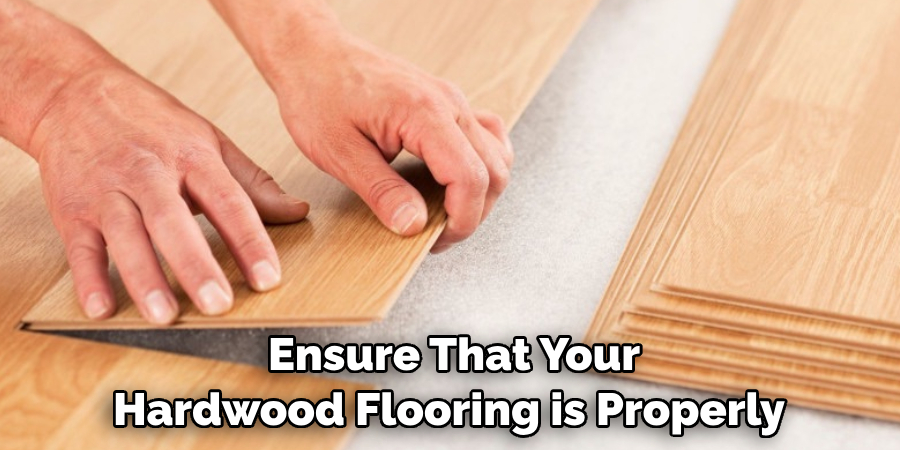
What is the Best Way to Stack Hardwood Flooring for Acclimation?
Prepping for and completing the installation process can be time-consuming for hardwood flooring. One of the most important steps in this process is allowing for proper acclimation before starting any work on the flooring. To properly stack your hardwood planks for acclimation, you should keep a few key things in mind.
The most important factor is temperature and humidity. Ensure that your room’s temperature is consistent and not too warm or cold, as this can cause damage to the wood. It should also be noted that wood planks should never be stacked directly on top of each other – instead, place a layer of plastic between each plank to ensure airflow.
Additionally, the planks should be placed against an interior wall and away from windows or other heat sources. When stacking your hardwood flooring, you should also ensure that each plank is facing in the same direction – this will reduce any warping or cupping.
How Can You Prevent Your Hardwood Flooring From Warping During the Acclimation Process?
To prevent your hardwood flooring from warping during the acclimation process, it is important to stack it correctly. In general, hardwood flooring should be stacked in a uniform pattern with no more than two boxes per layer, and the boards in each box should be positioned parallel and perpendicular.

This helps ensure that air can circulate properly. In addition, the wood should be placed on top of a smooth and flat surface, such as concrete, to ensure that it does not warp due to moisture build-up.
It is also important to keep humidity levels in your home at or below 45% during the acclimation process. To do this, use a humidifier or dehumidifier if necessary. If you are storing the hardwood flooring in an unconditioned space, such as a shed or basement, ensure that the temperature and humidity levels stay within the recommended range of temperatures for your particular type of wood.
Finally, keeping moisture away from the hardwood flooring during any part of the acclimation process is important.
What Environment is Best for Stack Hardwood Flooring During the Acclimation Period?
The ideal environment for stacking hardwood flooring during the acclimation period has a stable temperature and humidity. The temperature should remain between 60 and 80°F, with relative humidity between 30 and 50%. Avoid areas such as basements, garages, or other damp home parts.
Also, avoid placing them in direct sunlight or against air conditioning units. Stacking the flooring in a room where furniture and other items are stored can cause rising humidity levels as the temperature is more prone to fluctuate.
The environment should be free of dust and debris, so it’s best to cover your pile of hardwood flooring with plastic or cloth drop cloths. It’s also important to allow air circulation around the stack and avoid stacking different flooring together, as it can cause uneven acclimation.
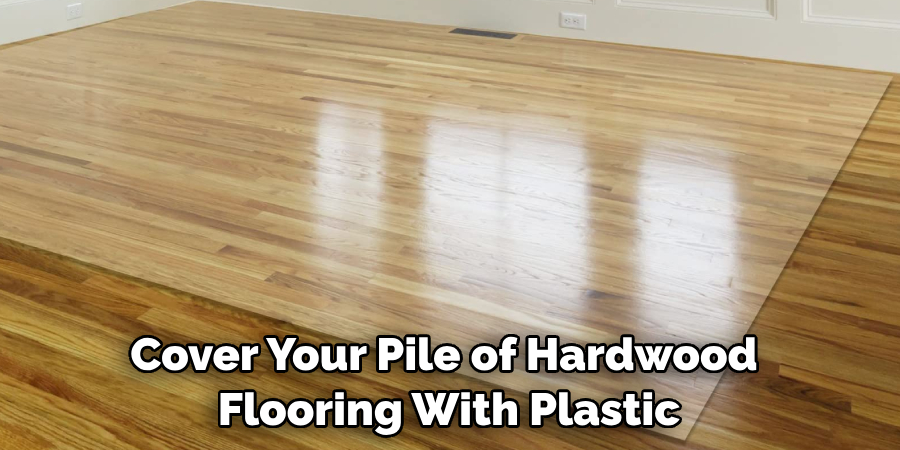
If you’re in an area with extreme temperatures or humidity levels, speaking with a professional about the best way to stack your hardwood flooring for acclimation is best. This will ensure all boards are fully acclimated correctly and ready to be installed.
Conclusion
In conclusion, stacking hardwood flooring correctly for acclimation can take time and effort, but it is worth it. Acclimating your hardwood floors properly allows them to adjust to their environment before installation and reduces the risk of warping, shrinking, or expanding.
To stack your hardwood flooring correctly: make sure you have a clean and level surface; arrange the flooring in a staggered pattern; use shims to keep the wood level and separated; allow at least two to three days for acclimation, and always ensure that ambient temperature is between fifty-five and eighty degrees Fahrenheit.
Taking these simple steps can help ensure your hardwood floors are properly acclimated and ready for installation. This article has been beneficial for learning how to stack hardwood flooring for acclimation. Make Sure the preventive measures are followed chronologically.
